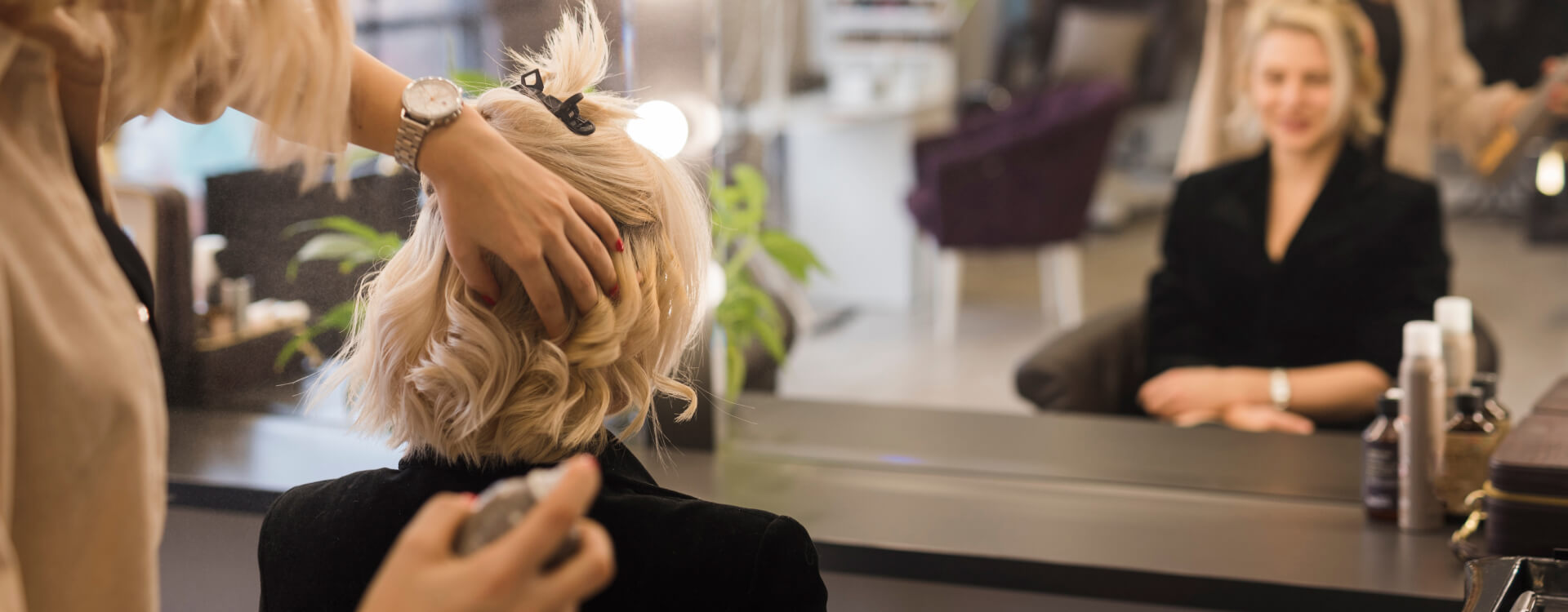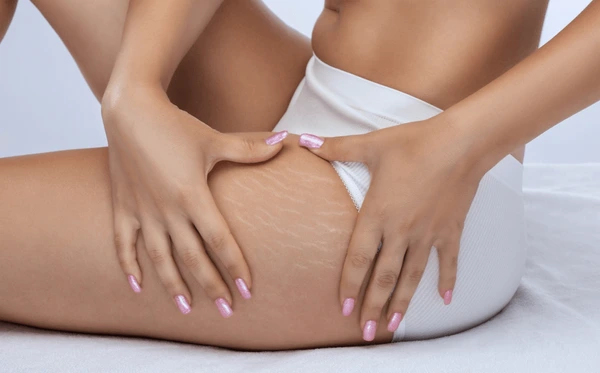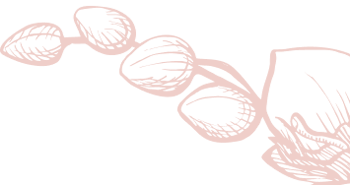
About
Stretch Marks Removal
Erase stubborn stretch marks with effective treatments at The Velvet Skin Centre, Lucknow. Our expert skin specialist ensures safe and visible results.
Book Appointment NowCall to book Appointment +91 8002558860

About
Erase stubborn stretch marks with effective treatments at The Velvet Skin Centre, Lucknow. Our expert skin specialist ensures safe and visible results.
Book Appointment Now
Stretch marks, which are often referred to as scars from rapid stretching or contracting of the skin, frequently take the form of bands of lines that run across the skin.
Stretch marks can happen to everyone, however they often afflict more women than males.
Stretch marks—also known as scars from rapid stretching or contracting of the skin—often appear as bands of lines that cross the skin.br>
This kind of scarring develops when the skin is unable to return to its usual shape following a period of rapid development, which frequently results from pregnancy, weight gain, weight loss, or puberty. Stretch marks are a common occurrence in pregnancy for more than 50% of women.

The best dermatologist in Lucknow, Dr. Asma, provides advanced stretch marks removal treatments designed to fade marks caused by pregnancy, growth spurts, or weight changes. Techniques such as laser therapy, microneedling, and PRP stimulate collagen production and skin renewal, restoring smoother, even-toned skin. Patients benefit from visible improvement, enhanced confidence, and long-lasting results with safe medical expertise.
When your body expands quickly for any cause, stretch marks may result. To keep up, your skin cannot stretch enough.
Your skin becomes more elastic thanks to a protein called collagen. If not enough, the marks could become visible when your skin extends.
You may get stretch marks because of:
It may feel somewhat elevated and itch when you first get stretch marks. Your skin has striated, wavy lines that are coloured differently. They fade from red or pink to purplish-blue to thinner, pale, more scar-like streaks over time. They might not be as obvious to you.
They can show up on many parts of your body:
Many solutions that claim to prevent stretch marks don't truly work, according to researchers. Almond oil, cocoa butter, olive oil, or vitamin E did not prevent stretch marks in tests.
Others may also be effective. Products like centella or hyaluronic acid, according to research, may help avoid stretch marks. Our skin naturally contains hyaluronic acid, and centella is a plant.
Usually, a dermatologist or other medical expert can detect if you have stretch marks only by glancing at your skin.
They will often also look into your medical background because stretch marks can be caused by a number of medical disorders. These consist of:
Some conditions, such anetoderma and pseudoxanthoma elasticum, can result in skin lesions that resemble stretch marks.
Skin lesions that resemble stretch marks can be a symptom of some medical diseases, including anetoderma and pseudoxanthoma elasticum.
How Does It Work? Microwounds are produced by this procedure's usage of Pixel Erbium-YAG Fractional Resurfacing Lasers. With time, the tissue beneath the stretch marks starts to break down, causing them to vanish. This encourages the formation of new skin by stimulating the production of collagen and cell regeneration.
Benefits Of Laser Treatment: This method uses Pixel Erbium-YAG Fractional Resurfacing Lasers, which results in microwounds. Stretch marks eventually fade when the tissue beneath them begins to degrade over time. By promoting collagen production and cell regeneration, this aids in the development of new skin.A painless method to lessen the visibility of white stretch marks is microdermabrasion. This method tightens the skin's collagen and elastin fibres by focusing on the epidermis, the top layer of skin.
During the procedure, the afflicted area is either sprayed with small exfoliating crystals or scrubbed with a wand with a unique tip. The crystals are gently removed with a tool resembling a wand, removing with them the dead epidermal skin. Repeated microdermabrasion over time is necessary for effective results.
Your skin could feel dry and constrictive after the operation. The exfoliation may have left some redness behind. Your skin normally heals within 24 hours. Although efficient, there is no assurance that this method will completely eliminate stretch marks. The results will vary depending on how severe your stretch marks are.
Morpheus8 is a needling procedure that heats the deepest layers of the skin and remodels the body's collagen using radiofrequency energy and fractional treatments. This promotes collagen formation, tightens the skin, makes the skin more elastic, and reduces wrinkles and lines.
This procedure elevates a standard microneedling procedure and encourages collagen synthesis in the skin's deepest layers in a way that other collagen induction procedures cannot. The good news is that it's all nonsurgical, and the mix of adjustable needles and heat energy helps produce some remarkable improvements.
There is no reliable proof (Reliable Source) that using creams, oils, or lotions to the skin would lessen the visibility of stretch marks.
There is no solid evidence (Reliable Source) to suggest that using creams, oils, or lotions to the skin would make stretch marks less noticeable.
The effects of topical therapies have been compared in several trials to formulations without active ingredients or to the effects of no therapy at all.
These studies demonstrated no statistically significant difference between the groups, indicating that the stretch mark healing process is not accelerated or improved by the currently available treatment alternatives.
About
About
With multiple skin and hair care clinics across Lucknow, including The Velvet Skin Centre led by Dr. Asma – the best skin doctor in Lucknow and a trusted hair specialist doctor in Lucknow – we make expert dermatological treatments easily accessible, ensuring you receive the best care close to home.
Phone: +91 8002558860
Phone: +91 8002558860
Phone: +91 8002558860

Copyright @ 2025 The Velvet Skin Centre All Rights Reserved